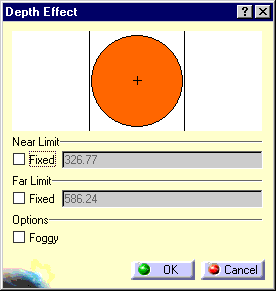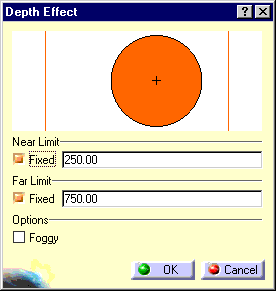ATOMIZER.cgr
BODY_1_2.cgr
BODY_2_2.cgr
LOCK.cgr
NOZZLE_1_2.cgr
NOZZLE_2_2.cgr
REGULATION_COMMAND.cgr
REGULATOR.cgr
TRIGGER.cgr
VALVE.cgr
-
Select the View->Depth Effect... command or the Depth Effects icon in the DMU Viewing toolbar to display the Depth Effect dialog box.
The orange sphere completely encompasses the objects in your document. The white cross represents the center of the objects in the geometry area.
The color of the area behind the orange sphere is the background color of your document.
The vertical lines represent the front (near) and back (far) clipping planes.
![]()
![]()
-
Set the Near Limit and Far Limit by checking the Fixed checkbox for each option, entering values and pressing Enter in each case.
Note that location of the vertical lines representing the clipping planes has changed.
-
Zoom in progressively to see how the geometry is clipped by the near clipping plane.
The back (far) section of the geometry is clipped. You now only see what is located between the near and far clipping planes.
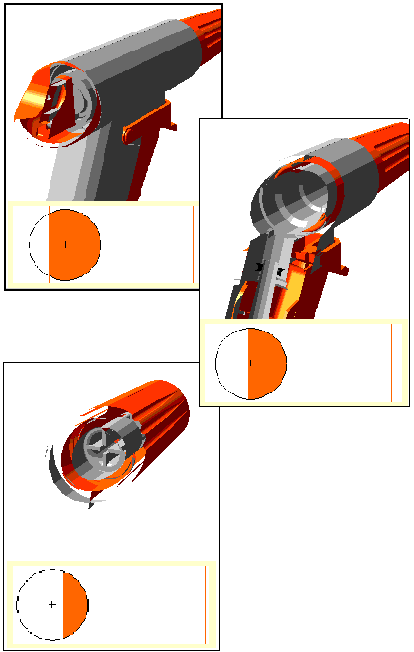
-
Zoom out to see all the geometry.
-
Click the Foggy option.
The foggy option introduces a foggy effect.
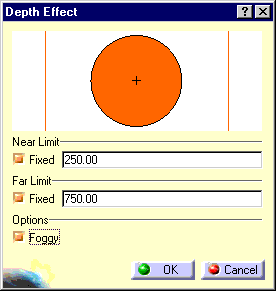
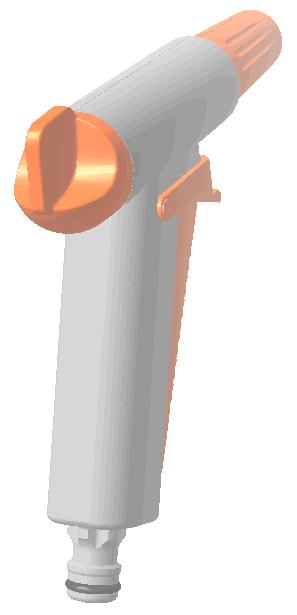
-
Zoom out again.
As you zoom out, the fog effect is increased. The fog gets thicker as you continue to zoom out beyond the back clipping plane.

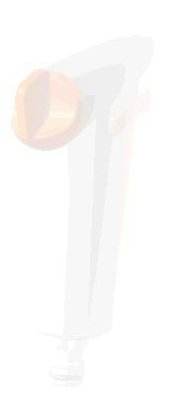
![]()
